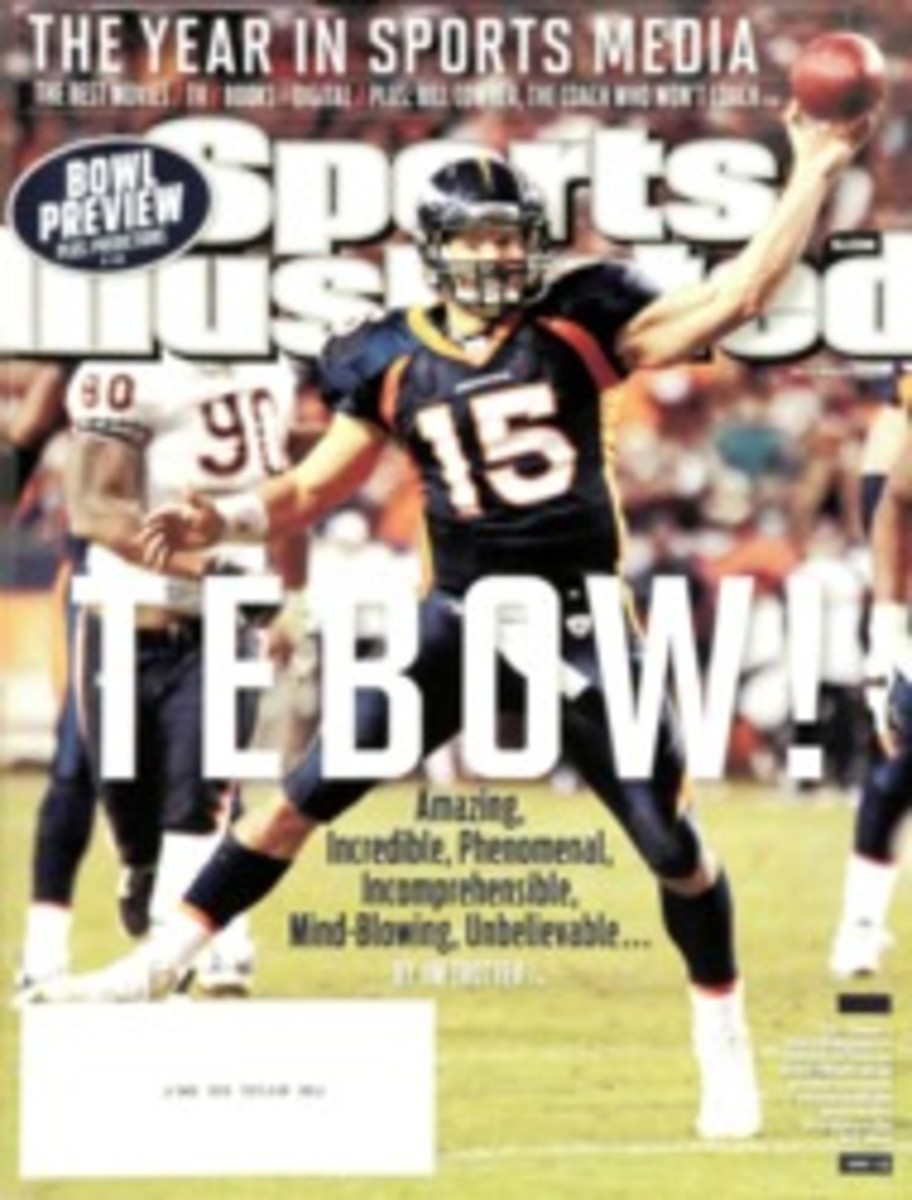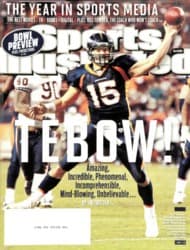
SOMEWHERE A CUB IS SMILING
My first memory of Ron Santo, the longtime Cubs third baseman, is from the summer of 1969. He was in the on-deck circle at Shea Stadium when a black cat crossed his path on its way toward the Chicago dugout. The photo of Santo looking over his shoulder as the cat scampered past him would become an enduring symbol of the buzzard's luck that has forever plagued the Cubs; they would famously fall out of first place later that season, a collapse that allowed the Miracle Mets to pass them on the way to a World Series championship. I was watching on TV in Brooklyn, an eight-year-old kid and budding Mets fan, hoping that the cat really had hexed the Cubs.
I felt guilty about that in later years, because for the rest of his life the curse of the Cubbies seemed to have an unusually strong hold on Santo. It doomed him to waiting, working and praying for things that never came, from the franchise's first World Series title since 1908 to a cure for the diabetes that eventually took both his legs. Even when the third of his greatest longings—election to the Hall of Fame—finally became a reality last week, as 15 of the 16 members of the new Golden Era Committee voted Santo in after years of his being denied, it was a blessing with a touch of the curse: The good news arrived nearly a year to the day after his death, at age 70, from bladder cancer.
No one would have blamed members of Santo's family if their appreciation of the honor was tainted by irritation at how it had come too late for him to enjoy it. But for the people who loved him, there was hardly a trace of bitterness to mix with the sweet. "It would be great if he could have been here to see it," says his son Jeff, 48, the second of Santo's four children. "But out of all the emotions I'm feeling, it's mostly joy, for my dad and all the people who wanted this for him. I'm not saying my dad wouldn't get disappointed over the years when he wouldn't get enough votes, but he always bounced back. He felt like a very lucky guy."
That's because for Ron Santo there was a happy side to every heartbreak. The Cubs brought him misery by never reaching the Series in his lifetime, but that misery also brought him love—from fellow Chicago fans who listened to him when he became a radio analyst for the team in 1990 and felt his emotions rise and fall with every win or loss just as theirs did. He was one of them, so true to the team that his ashes were scattered around third base at Wrigley Field. The despair in his voice when things went badly for the Cubs, as when Brant Brown dropped a ninth-inning fly ball that cost them a game in 1998 ("Ohhh, no! Nooo! ") was classic, tragicomic Santo. "That was one of his gifts as a broadcaster and as a person," said former teammate Billy Williams, who was a member of the Hall of Fame committee that finally voted Santo in. "He could make you smile even when you felt bad for him."
The diabetes, which was discovered early in his 15-year career, didn't keep Santo from hitting 342 home runs, winning five Gold Gloves and making nine All-Star Game appearances during a time when it was much more difficult to monitor the disease than it is today. The positive side of his condition wasn't only that it spurred him to help raise millions of dollars for juvenile diabetes research but also that it brought him closer to Jeff, a filmmaker whose 2004 documentary on his father, This Old Cub, still does a brisk DVD business on his website, santofilms.com.
Jeff approached his father for permission to follow him with a video camera when Santo was facing his second leg amputation. "He immediately said, 'Aw, son, I don't think so,' " Jeff says. "He was a very humble guy. He finally said he'd give me two weeks, and if he didn't like how it was going, he'd pull the plug on the project, just like he was some studio head." But he didn't pull the plug, in part because of the time he got to spend with his youngest son. "To see his determination up close, and to see the way people felt about him was invaluable to both of us," Jeff says. "Without the disease, we wouldn't have had that opportunity."
For the first 15 years of Santo's eligibility, the Hall of Fame vote became an annual source of frustration; he never drew more than 43.1% of the vote, well shy of the 75% needed. "When he fell short, he would get not so much angry but disappointed," Jeff says. "He'd say that this was it, that he wasn't going to be so serious about [getting into the Hall]. Then the next time would come around, and he'd say he really thought this was going to be the year." But if he hadn't been snubbed by the voters so many times, Santo might never have known how much he was appreciated by everyone else, including the Cubs franchise, which retired his number 10 in 2003, an honor the team previously reserved for Hall of Famers.
Now Santo is finally a member of that exclusive group, and though his family, friends and former teammates have made their peace with the honor coming posthumously, the eight-year-old version of me always will regret rooting against a man who so clearly deserved better. I'd like to think he would have appreciated that, even though it would have reminded him of the collapse of the '69 Cubs. He'd probably say, Just my luck.
Follow @SI_PhilTaylor
THE CURSE OF THE CUBBIES SEEMED TO HAVE AN UNUSUALLY STRONG HOLD ON RON SANTO. BUT FOR THE NEWLY MINTED HALL OF FAMER THERE WAS A HAPPY SIDE TO EVERY HEARTBREAK.
PHOTO
JOHN BURGESS

